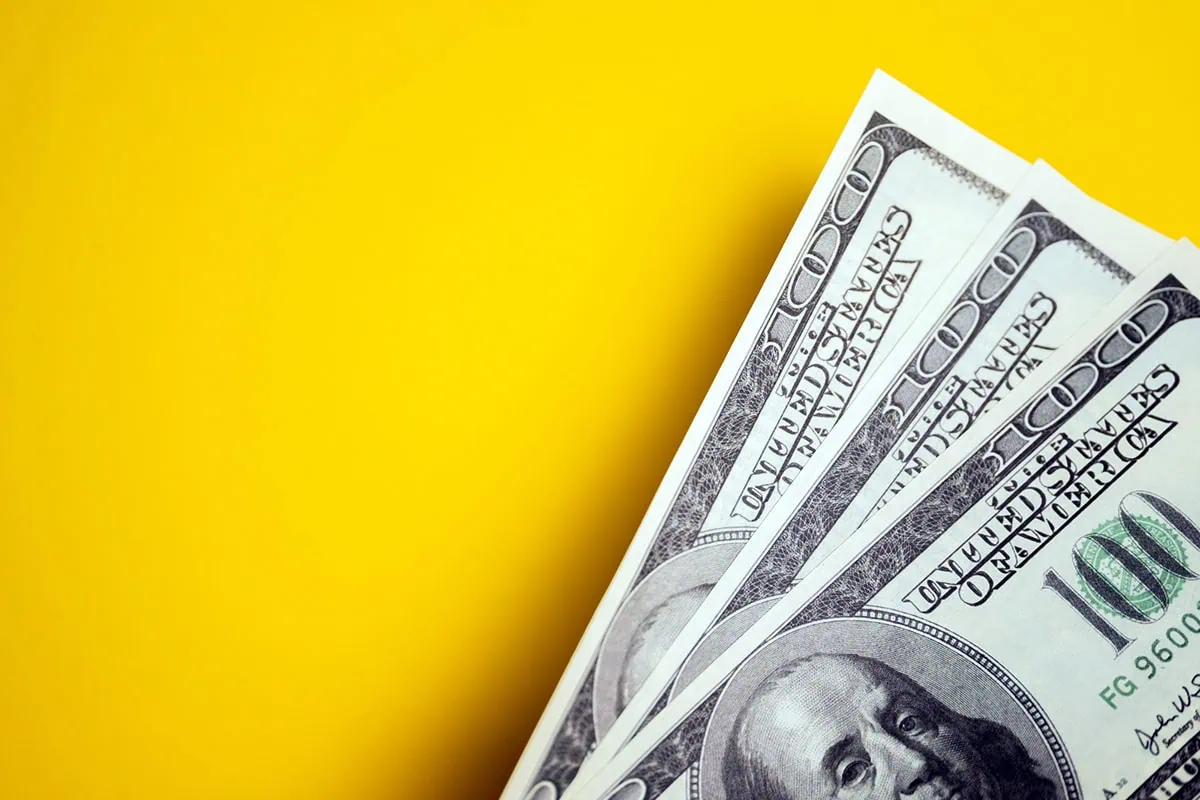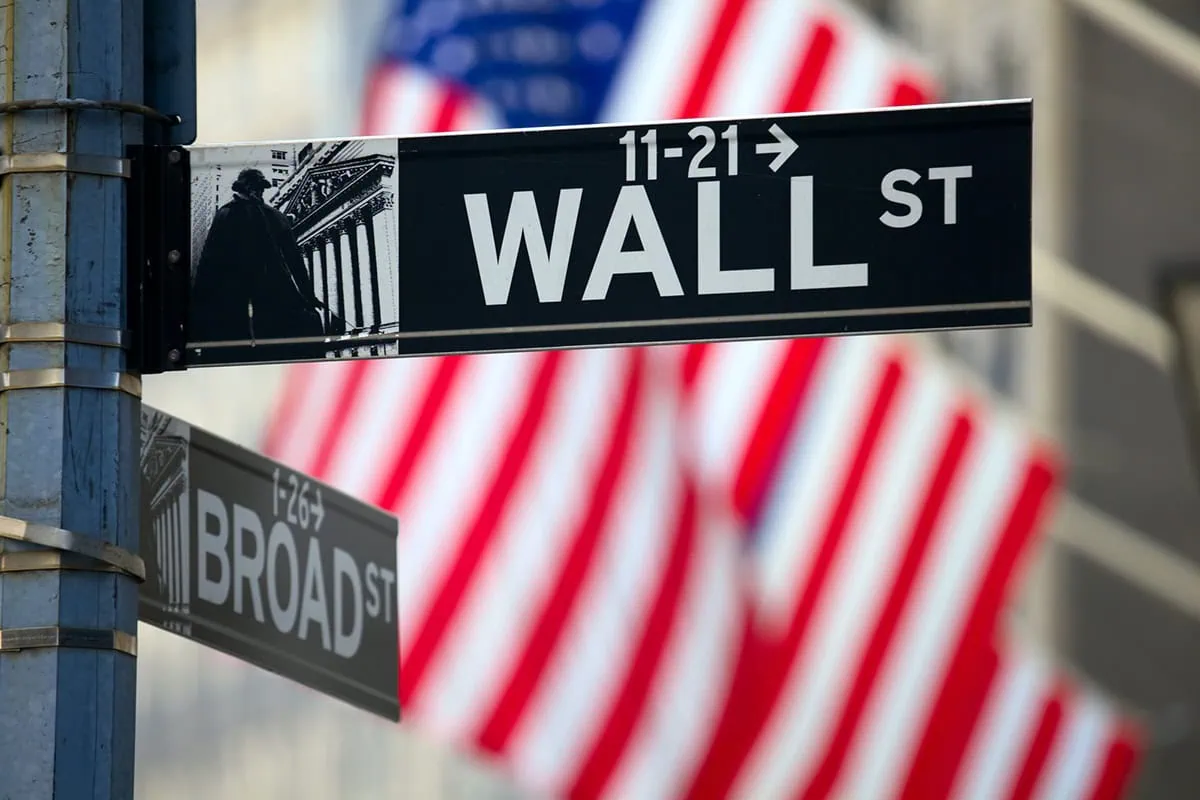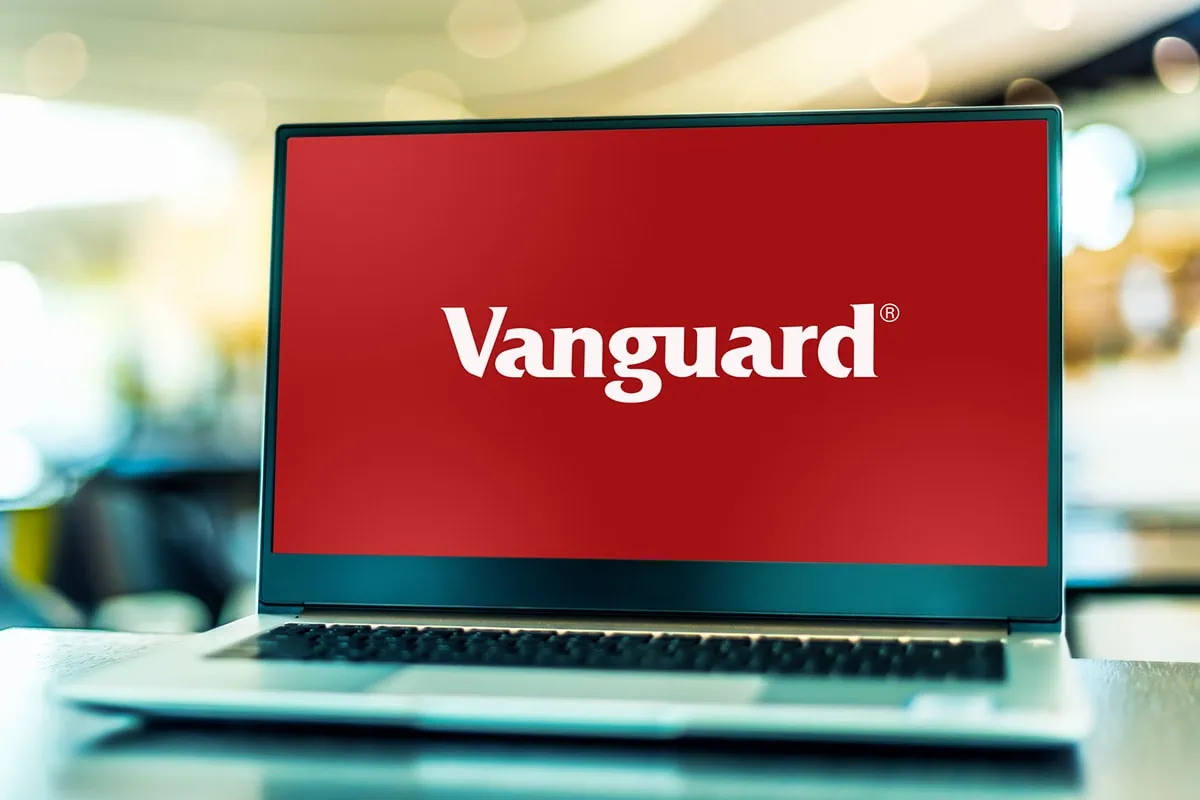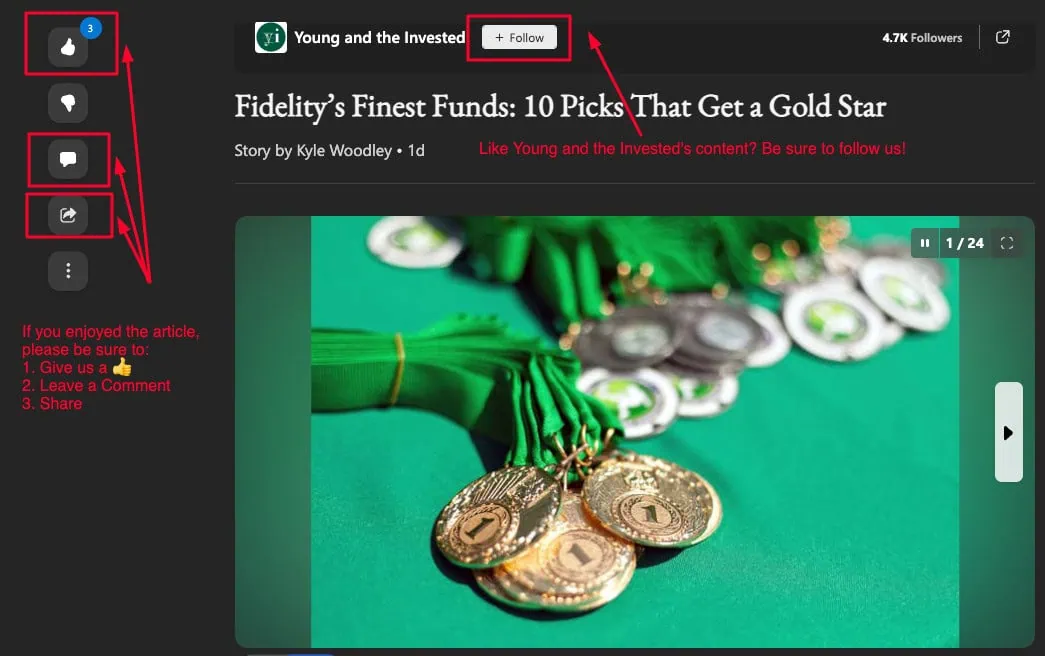Closed-end funds (CEFs) don’t have nearly the same level of name recognition as their much, much larger mutual fund and exchange-traded fund brethren.
But that doesn’t mean they’re not useful.
Despite their relative lack of overall assets, CEFs have been a staple of income portfolios for decades. They can be held in brokerage accounts and IRAs. If timed well, they can generate solid trading returns. And perhaps most importantly to people attracted to CEFs: They often sport extremely attractive yields.
CEFs, like mutual funds and ETFs, cover a variety of strategies, whether that’s basic stocks, sectors, corporate bonds, tax-free municipal bonds … you name it. And they can even hold illiquid assets that are either difficult or impossible to own within mutual funds and ETFs.
Today, I’ll explain some of the basics of closed-end funds, then I’ll present you with my recently updated list of great CEFs to buy. At the moment, this group of funds yields 7.8% on average, with several CEFs delivering double-digit yields.
Disclaimer: This article does not constitute individualized investment advice. These funds appear for your consideration and not as investment recommendations. Act at your own discretion.
Editor’s Note: The tabular data presented in this article is up-to-date as of Aug. 26, 2025.
Featured Financial Products
Table of Contents
What Is a Closed-End Fund?

A closed-end fund is a special type of investment fund that shares certain traits in common with their cousins: traditional open-end mutual funds and exchange-traded funds (ETFs).
But there are also a number of critical differences that make CEFs very different from both, which in turn can help determine whether you should own CEFs or more orthodox funds.
CEFs vs. Mutual Funds vs. ETFs

CEFs are best understood by comparing them to the competition.
You’re likely very familiar with open-end mutual funds, which are the investment vehicle of choice for 401(k)s and other retirement plans. But you may not actually understand how they work.
When you invest in an open end mutual fund, you (or your broker) actually sends cash to the fund, which the manager then uses to buy stocks, bonds or other securities. And when you redeem, the mutual fund manager will send you or your broker the cash, even selling securities to free it up if need be.
Exchange-traded funds are different. Investors can buy or sell ETFs exactly as they would any stock. They trade on major stock exchanges.
Unlike mutual funds, you don’t actually send the manager money. New ETF shares can be created or destroyed by institutional investors based on market demand. (When shares are created, an institutional investor will essentially buy up the shares of stocks and bonds owned by the ETF, then trade them to the fund for shares of the ETF itself. When shares are destroyed, the institutional investor receives the underlying holdings.)
This creation and destruction of new ETF shares ensures that the ETF’s market price never deviates too far from the net asset value (NAV), or the value of the underlying holds.
And this brings us to CEFs.
CEFs Pool Funds From Several Investors

Like open-end mutual funds and exchange-traded funds, closed-end funds are pooled investment vehicles. You have many investors pooling their assets into a common fund, which is invested by a manager or a team of managers. (And while mutual funds and ETFs can be index funds, which are rules-based and effectively run by computers, all CEFs are actively managed.)
Unlike mutual funds—but like exchange-traded funds—closed-end funds trade on a stock exchange. You buy the shares in a brokerage account and never send the manager cash.
Because ETFs and CEFs don’t have to meet redemptions like open-end mutual funds, liquidity is less of an issue. They can hold thinly traded or illiquid securities without having to worry about selling them due to a wave of redemptions.
But unlike exchange-traded funds, closed-end funds have no creation or destruction of shares. A CEF actually holds an initial public offering (IPO) when it creates its shares, and that number of shares is fixed. That might sound like a mundane detail, but it’s actually one of the most important aspects of CEFs. Here’s why:
1. Net Asset Value

Net asset value is the value of a fund’s net asset position (the value of the stocks, bonds, and other securities it owns minus any liabilities) divided by the number of shares outstanding.
Open-end mutual funds are always valued at their net asset value. And with exchange-traded funds, the shares’ net asset value will never deviate too much from the market price due to the creation and destruction mechanism. But because CEFs have no such mechanism, the market price of the shares can vary wildly from the net asset value. They can trade at large premiums to net assets or—benefiting us—at deep discounts.
Many closed-end fund investors prefer to buy CEFs when they are trading at deep discounts to net asset value. Why not? It’s intuitively appealing to buy that proverbial dollar for 95 cents.
2. Leverage

Leverage is finance-speak for borrowing money to invest. This can boost returns, but it also increases risk. If you own a home, you know how this works. An increase or decrease in property value has an outsized impact on your home equity.
Closed-end funds will generally employ at least a modest amount of leverage, though it is not uncommon for a CEF to be leveraged as much as 30% to 40%. Of course, CEFs generally don’t “borrow on margin” like regular mom-and-pop investors. They generally have access to more sophisticated—and cheaper—funding options.
This leverage is a major reason that CEFs are able to generate some of the highest yields in the entire stock market. But it comes with risks. The same leverage that boosts returns when assets are rising compounds the losses when assets are falling. Furthermore, many CEFs tend to borrow at (normally) cheaper short-term rates and invest the proceeds in longer-term assets. That strategy is most profitable when the yield curve is steep (long-term rates are much higher than short-term rates), but it can be difficult to navigate when the yield curve is inverted (when short-term rates are higher than long-term rates), which was the case for a long stretch between July 2022 and October 2024.
When evaluating closed-end funds, you will want to take the leverage into consideration.
3. Distributions

The majority of closed-end funds are income funds. Whether they are fixed-income closed-end funds (bonds) or equity closed-end funds (stocks), chances are good that income is a major investment objective, and CEFs tend to offer high yields.
CEFs generally do not pay taxes at the fund level so long as they distribute 90% or more of their dividend and interest income, and 98% of their realized capital gains. This tax incentive is another factor in the outsized payouts we see in this space.
Closed-end funds’ payouts are referred to as distributions. CEF distributions will generally come from some combination of four sources:
1. Interest on fixed income or other interest-bearing securities
2. Dividends from stocks
3. Realized capital gains
4. Return of capital
That last item needs a little explaining. A return of capital can be “constructive,” in that the proceeds represent unrealized capital gains and don’t erode the value of the fund. Or they can be “destructive” in that the fund is simply giving investors their own money back.
Even destructive return of capital isn’t necessarily destructive nor nefarious. CEFs will often smooth out their distributions to give their investors an even income stream, and sometimes this might mean distributing more than current earnings would support. If it is temporary, it’s generally not a problem. But keep an eye out for it. If return of capital makes up a large proportion of the CEF’s distribution, they might need to cut the distribution in the not-too-distant future.
Do you want to get serious about saving and planning for retirement? Sign up for Retire With Riley, Young and the Invested’s free retirement planning newsletter.
A Note on How Distributions Affect Taxes

The varied mix of income sources mean that your distributions will be taxed at different rates, all of which will be broken down on the 1099 you receive from your broker.
In the case of municipal bond CEFs, the vast majority of your distribution will be classified as tax-free. You would only have taxable income if the fund sold bonds and generated realized capital gains, in which case you would owe taxes at the short- or long-term capital gains tax rate. And any return of capital would lower your cost basis, thus setting you up for capital gains in the future when you eventually sell your shares.
For taxable CEFs, your distribution will be a mixture of dividends, ordinary income (interest) and short and long-term capital gains. As with tax-free muni funds, in the event of return of capital you will also have a lower cost basis, which will come into play when you eventually sell.
Related: 7 Best High-Dividend ETFs for Income-Minded Investors
Top Closed-End Funds You Can Buy

With that as background, let’s now take a look at the best closed-end funds to buy in 2025.
As with any investment strategy, diversification is critically important. So, we’re going to cover a variety of CEFs, including both equity closed-end funds and fixed-income closed-end funds.
Like Young and the Invested’s Content? Be sure to follow us.
1. Eaton Vance Municipal Income Trust

— Style: Tax-free municipal bond
— Assets under management: $416.5 million
— Distribution rate: 5.9%
— Distribution frequency: Monthly
— Expense ratio: 2.34%, or $23.40 per year on $1,000 invested
Let’s start with a good tax-free municipal bond CEF: the Eaton Vance Municipal Income Trust (EVN).
Managers William Delahunty and Cynthia Clemson are tasked with building a tax-advantaged portfolio of municipal bonds—bonds issued by sub-federal entities including states, counties, and cities. For instance, tops among EVN’s 235 holdings are bonds from Miami-Dade County, Florida; the Alameda Corridor Transportation Authority in California; and the Chicago Board of Education in Illinois.
Related: 5 Best Fidelity Retirement Funds [Low-Cost + Long-Term]
Most of the portfolio is investment-grade in nature, though around 10% is considered below investment-grade (aka “junk”), and another 15% isn’t rated by the major bureaus. (Note: Unrated bonds aren’t necessarily of low quality.)
EVN also utilizes a heavy amount of leverage, currently 33%. That allows management to invest more than its actual assets in hand, which has a few effects. On the upside, it improves the fund’s yield and amplifies gains when the fund’s bonds grow in value. On the downside, it also amplifies losses. In short: You’re getting a more volatile muni-bond experience than you’d get from a traditional mutual fund or ETF.
As I mentioned before, one of the most important aspects of municipal bonds is the tax treatment. At current prices, EVN yields a tax-free 5.9%. If you’re in the 37% tax bracket, and you’re also paying the 3.8% federal net investment income tax (NIIT), you’d need to buy a taxable bond yielding 10% to get the same amount of after-tax yield that EVN provides!
A couple other things to note: Like many CEFs, Eaton Vance’s muni-fund pays distributions on a monthly basis. Also, EVN currently trades at a small 1% premium to NAV, meaning you’re paying a little more for the fund’s assets (on a per-share basis) than you would by owning the assets outright. It’s not abnormal for high-quality funds to trade for a premium. Indeed, for much of its trading life before the mid-2010s, EVN traded above its NAV … however, it has traded at a discount for almost all of the past eight years.
Related: 5 Best Vanguard Retirement Funds [Save More, for Less]
2. BlackRock Floating Rate Income Trust

— Style: Floating-rate income
— Assets under management: $282.1 million
— Distribution rate: 11.6%
— Distribution frequency: Monthly
— Expense ratio: 2.86%, or $28.60 per year on $1,000 invested
Bond yields surged higher for most of 2022 and 2023, which wreaked havoc on many fixed-income portfolios. (The math on bonds is simple: If bond yields go up, then prices come down, and vice versa.)
Related: The 7 Best Dividend ETFs [Get Income + Diversify]
One way to minimize this seesaw effect is to focus on floating-rate securities. These bonds have regular resets that tie the coupon payment to prevailing market interest rates. So, as market yields rise, so does your payout!
The flip side, of course, is that falling yields mean a smaller payout. So, the degree to which you want to own floating-rate securities ultimately comes down to what direction you expect interest rates to trend. But regardless, having at least a little exposure to floating rates makes sense, if for no other reason than to offer diversification.
Related: 5 Best Vanguard Dividend Funds [Low-Cost Income]
One solid option is the BlackRock Floating Rate Income Trust (BGT). BGT is required to invest at least 80% of its assets in floating- and variable-rate instruments. The average effective duration of its portfolio is not expected to be more than 1.5 years. In plain English, that means that a 1-percentage-point rise in market interest rates would translate to just about 1.5% in capital losses, or a 1-point drop in market interest rates would translate to about 1.5% in capital gains. And remember: That is the maximum. The current effective duration at time of writing is a meager 0.09 years, meaning a move in market interest rates should have a negligible effect on BGT’s share price.
Said differently: Don’t expect this CEF to get whipped around by volatility in the bond market.
It might behoove would-be investors to wait on this one, however. At current prices, BGT actually trades at a modest 3% premium to NAV, meaning that if you buy this CEF, you’re spending $1.03 for every $1.00 in assets. Of course, you’d also collect a wild distribution of more than 11%.
Featured Financial Products
Related: The 7 Best Vanguard Index Funds for Beginners
3. General American Investors

— Style: Large-cap stock
— Assets under management: $1.4 billion
— Distribution rate: 0.4%
— Distribution frequency: Annually
— Expense ratio: 1.11%, or $11.10 per year on $1,000 invested
Let’s move on to equity CEFs, where I want to start with a big exception to the rule.
Most closed-end funds offer extremely large distributions, even if it means using realized capital gains and return of capital because the fund doesn’t generate much dividend or interest income.
Related: 10 Best Dividend Stocks to Buy [Steady Eddies]
General American Investors (GAM), however, seems content to simply deliver higher prices on its shares.
General American Investors, founded in 1927, is the oldest surviving CEF—a pretty straightforward and narrow fund that seeks out growth stocks trading at reasonable prices. President, CEO, and Portfolio Manager Jeffrey W. Priest has built a portfolio of roughly 65 large-cap stocks. Some top holdings, such as Berkshire Hathaway (BRK.B) and Microsoft (MSFT), you can find at the top of most large-cap index funds. But Priest has also put an emphasis on a few midsized and smaller large caps, such as waste disposal company Republic Services (RSG) and insurer Arch Capital (ARCH).
GAM uses a moderate amount of leverage (11% currently). That hardly does anything for its meager yield, but it has made some difference in the fund’s returns. Over the past 30 years, GAM has massively outperformed the S&P 500, about 2,760% to 1,900%, on a total-return basis (price plus dividends).
Better still: GAM trades at a thick 10% discount to NAV, meaning you’re buying its assets for 90¢ on the dollar.
Related: 13 Dividend Kings for Royally Resilient Income
4. Tortoise Energy Infrastructure Corp.

— Style: Energy infrastructure stock
— Assets under management: $740.1 million
— Distribution rate: 10.2%
— Distribution frequency: Monthly
— Expense ratio: 2.82%, or $28.20 per year on $1,000 invested
If you are looking for income, energy infrastructure should be one of the first places you look.
Oil-and-gas pipeline stocks offer some of the highest yields in the entire stock market. Some of this is due to their unique tax structure. Because of their high non-cash depreciation expenses, pipeline stocks tend to pay comparatively little in taxes. And the pipeline stocks organized as master limited partnerships (MLPs) pay no company income taxes at all so long as they distribute at least 90% of their profits as distributions.
Related: 7 Low- and Minimum-Volatility ETFs for Peace of Mind
One of the major downsides to owning MLPs is the tax reporting. The annual K-1 tax forms can be a real bear to deal with, even for experienced tax preparers. But this is where an MLP closed-end fund can really add value. You get a diversified basket of quality pipeline stocks without the tax hassle of owning the stocks outright.
There are several energy infrastructure CEFs out there, but one in particular I like is the Tortoise Energy Infrastructure Corp (TYG). The fund owns a diversified basket of MLPs and corporate pipeline stocks, with the majority of the portfolio invested in natural gas infrastructure.
Related: 7 High-Quality, High-Yield Dividend Stocks
America’s energy grid is getting greener every day as renewable energy in wind and solar gain market share. But natural gas is still a critical and growing piece of that energy grid, and it likely will be for the rest of our lifetimes.
TYG currently trades at a decent 5% discount to NAV and yields a stellar 10.2%.
Do you want to get serious about saving and planning for retirement? Sign up for Retire With Riley, Young and the Invested’s free retirement planning newsletter.
5. Neuberger Berman Real Estate Securities Income Fund

— Style: REITs and preferred stock
— Assets under management: $206.6 million
— Distribution rate: 11.5%
— Distribution frequency: Monthly
— Expense ratio: 2.70%, or $27.00 per year on $1,000 invested
Real estate investment trusts (REITs) have gone through some rough patches over the past few years. Because REITs have always had a major emphasis on income, investors have come to view them as a bond substitute. But when bond yields started to surge higher again in 2022, bond prices collapsed … and REIT prices fell in sympathy.
In 2024, however, when it appeared that bond yields had topped out, REITs mounted a strong recovery.
Related: Best Vanguard Retirement Funds for a 401(k) Plan
Where will they go from here? It’s possible REITs could do all right regardless of what bond yields do. If yields fall—and bond prices rise—then REIT prices should also benefit. If inflation proves to be stubborn and yields remain high, REITs should be in a better position than they were a year ago, as the rents they collect from tenants should also trend higher in line with inflation.
One way to play a recovery in REITs is via the Neuberger Berman Real Estate Securities Income Fund (NRO). Two-thirds of assets is invested in REIT common shares, while the remaining third is holed up in preferred stock (high-yield “hybrid” securities that have features of both stocks and bonds).
If you believe that REITs are attractive, NRO is a solid option. It yields a massive 11.5% at current prices and trades at a 4% discount to NAV.
Related: 8 Best-in-Class Bond Funds to Buy
6. Calamos Strategic Total Return

— Style: Moderately aggressive allocation
— Assets under management: $3.0 billion
— Distribution rate: 6.7%
— Distribution frequency: Monthly
— Expense ratio: 1.00%, or $10 per year on $1,000 invested
Investors can also get a mixture of stocks and bonds via an “allocation” (or balanced) fund, such as Calamos Strategic Total Return (CSQ).
Morningstar categorizes Calamos Strategic Total Return as a “moderately aggressive allocation” fund, which it defines as having 70% to 85% equity, with the remainder in fixed income. CSQ doesn’t always aim for that level—it actually only pledges to include “at least 50% in equities”—it’s close, currently, at about 65% equities. And that stock exposure is similar to what you’d get from an S&P 500 or other large-cap fund right now: a lot of blue-chip names with a big emphasis on technology (roughly a third of assets). Top equity holdings right now include the likes of Microsoft, Nvidia (NVDA), and Apple (AAPL).
Related: 11 Best Alternative Investments [Options to Consider]
The remainder is spread among a variety of other fixed income; predominantly convertibles and high-yield corporate bonds, but also preferred stock, asset-backed securities (ABSes), and other issues.
Calamos Asset Management founder John Calamos and a team of advisers use a healthy heaping of leverage (roughly 30%) to help amplify yields and performance, hence a nearly 7% yield on a portfolio that would deliver closer to low single digits in a traditional vehicle. Of course, the portfolio is a bit more aggressive, and performance more volatile, than a similarly built mutual fund or ETF might deliver.
Also like many of the other best CEFs listed here, it also pays monthly.
CSQ is in the midst of another up year, which is par for the course for this category-leading fund. Despite this, you can buy shares at a nearly 5% discount to NAV, which is cheap relative to its five-year average discount of less than 1%.
Related: 12 Best Investment Opportunities for Accredited Investors
7. BlackRock Enhanced Equity Dividend Trust

Style: Equity options
Assets under management: $1.6 billion
Distribution rate: 8.3%
Distribution frequency: Monthly
Expense ratio: 0.88%, or $88 per year on $10,000 invested
Covered call writing has always been a popular strategy for income investors. In a covered call trade, you write—or sell—options against a stock position you own, collecting the option premium as income.
For example, let’s say you own 100 shares of Microsoft currently trading at $500. You could sell a call option that expires in a month at a strike price of $525. If, a month from now, Microsoft is trading below $525, great! The option expires worthless and you keep the premium from the original sale.
Related: The 9 Best Dividend Stocks for Beginners
But let’s say that Microsoft enjoys a nice run and blasts higher to $530. What happens now? The person you sold the call option to has the right to buy the Microsoft shares from you for $525 per share. No problem. You missed out on a little upside, but you still sold at a profit and you still get to keep the premium from the option you sold. Not a bad deal!
If you’d like to have a pro handle all of this for you, consider the BlackRock Enhanced Equity Dividend Trust (BDJ). The fund holds a diversified basket of dividend paying stocks and then further enhances the income by writing covered calls on them.
At current prices, BDJ trades at a nice 6% discount to net asset value and yields well north of 8%.
Want to talk more about your financial goals or concerns? Our services include comprehensive financial planning, investment management, estate planning, taxes, and more! Schedule a call with Riley to discuss what you need, and what we can do for you.
Featured Financial Products
Related: 13 Best Long-Term Stocks to Buy and Hold Forever

As even novice investors probably know, funds—whether they’re mutual funds or exchange-traded funds (ETFs)—are the simplest and easiest ways to invest in the stock market. But the best long-term stocks also offer many investors a way to stay “invested” intellectually—by following companies they believe in. They also provide investors with the potential for outperformance.
So if you’re looking for a starting point for your own portfolio, look no further. Check out our list of the best long-term stocks for buy-and-hold investors.
Related: 5 Best Vanguard Dividend Funds for 2025 [Low-Cost Income]

What’s better than a smart, sound dividend income strategy? How about a smart, sound dividend income strategy with very little money coming out of your pocket?
If that sounds good to you, you need look no farther than low-cost pioneer Vanguard, which offers up a number of payout-oriented products. Find out what you need to know in our list of five top-notch Vanguard dividend funds.
Please Don’t Forget to Like, Follow and Comment

Did you find this article helpful? We’d love to hear your thoughts! Leave a comment with the box on the left-hand side of the screen and share your thoughts.
Also, do you want to stay up-to-date on our latest content?
1. Follow us by clicking the [+ Follow] button above,
ƒ2. Subscribe to Retire With Riley, our free weekly retirement planning newsletter, and
3. Give the article a Thumbs Up on the top-left side of the screen.
4. And lastly, if you think this information would benefit your friends and family, don’t hesitate to share it with them!






